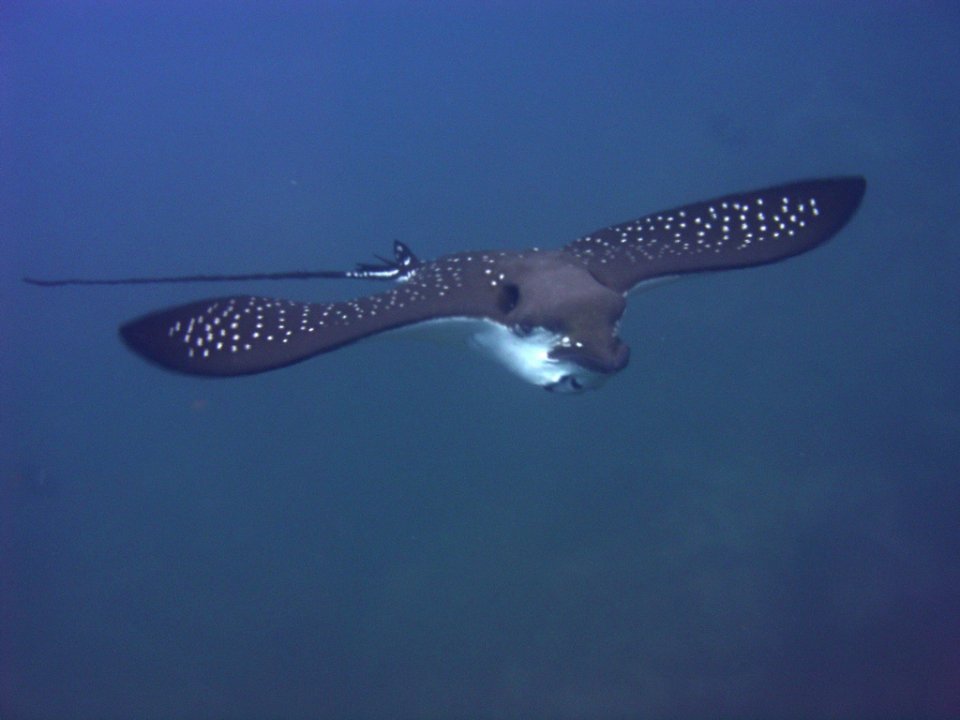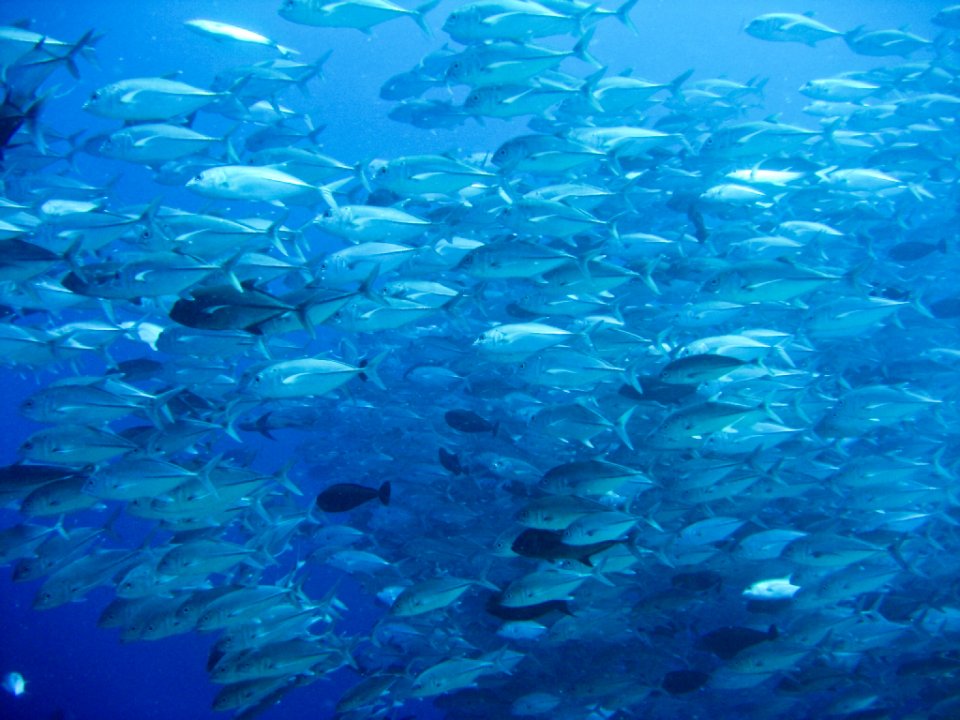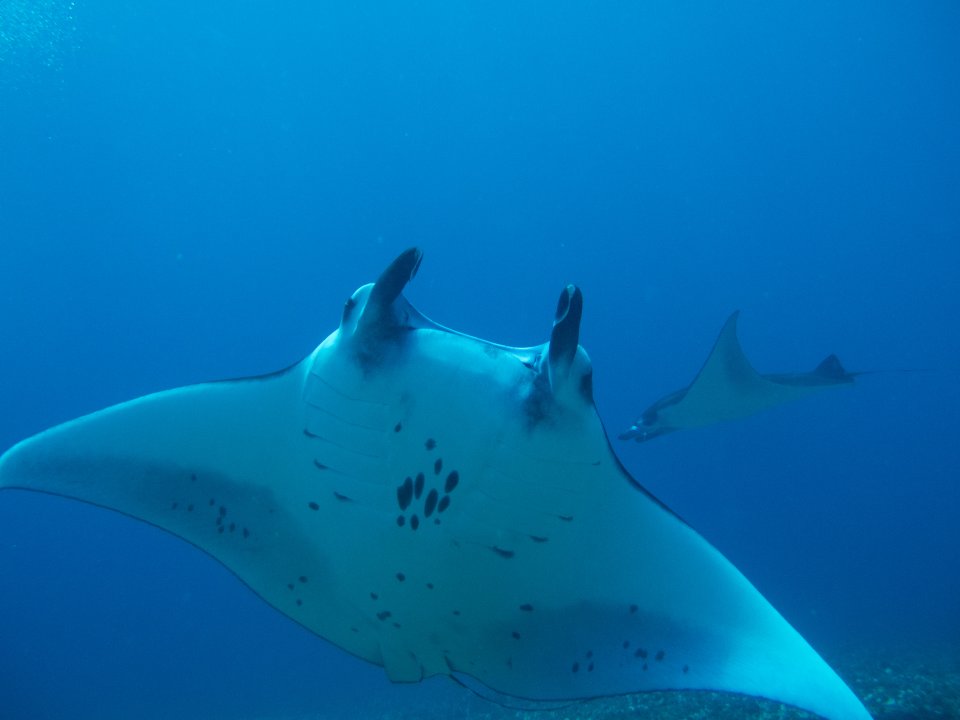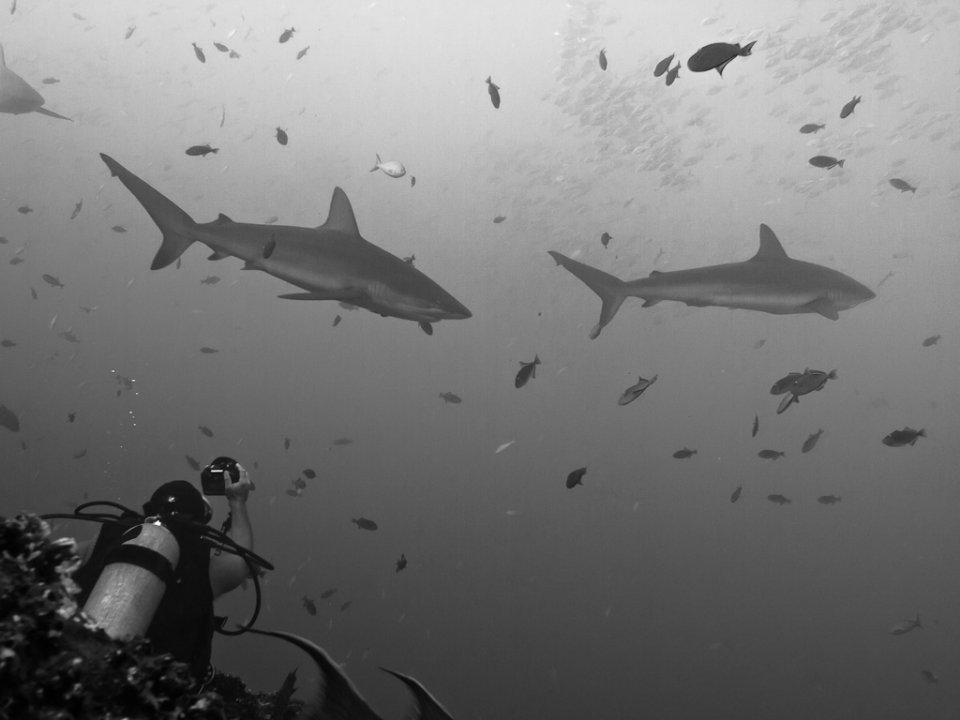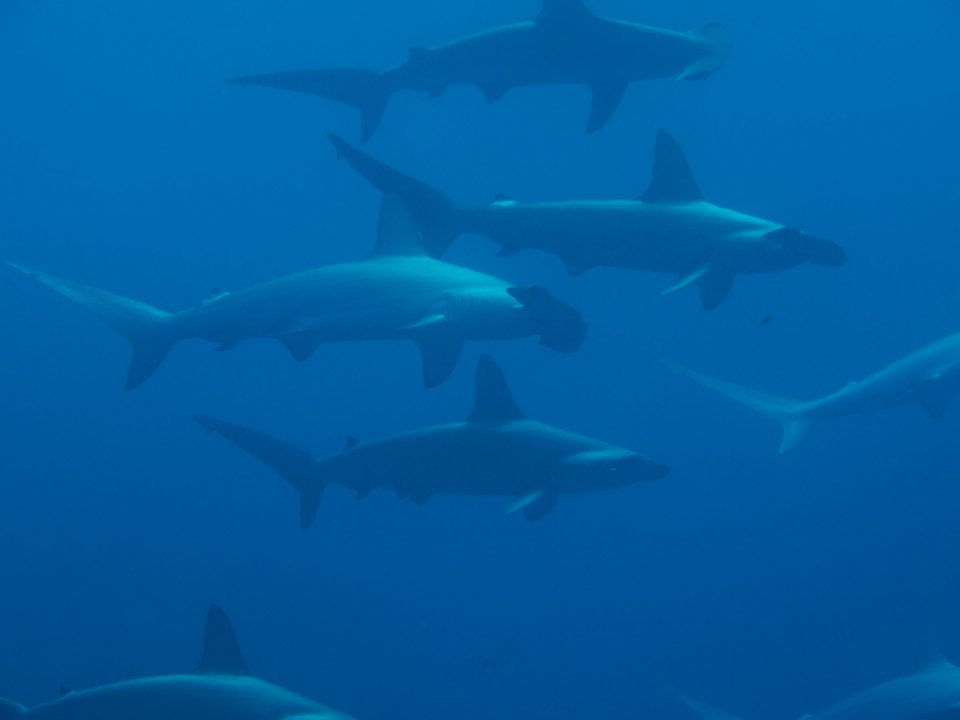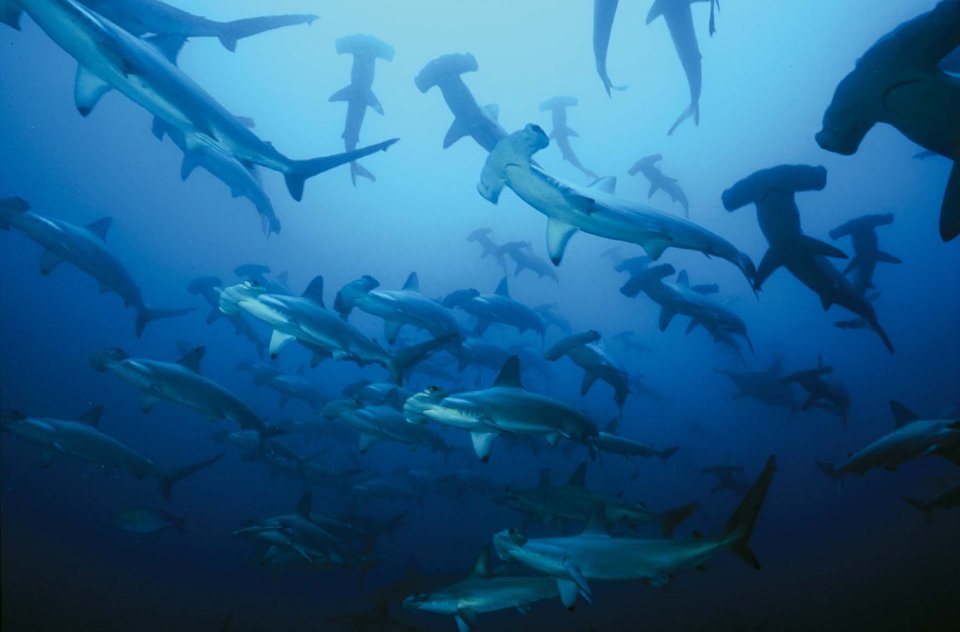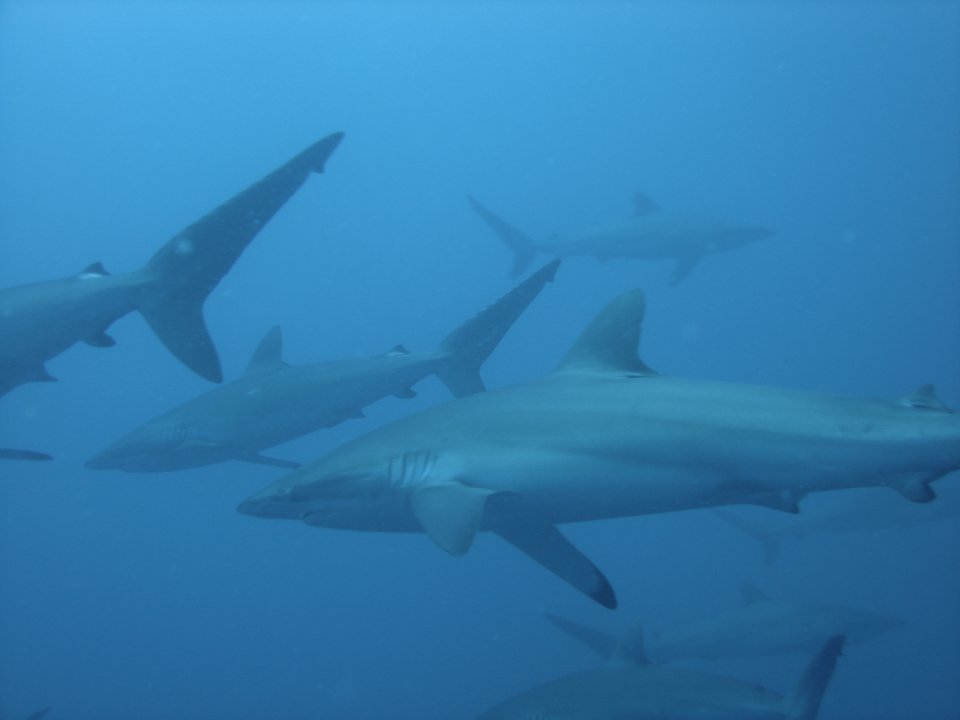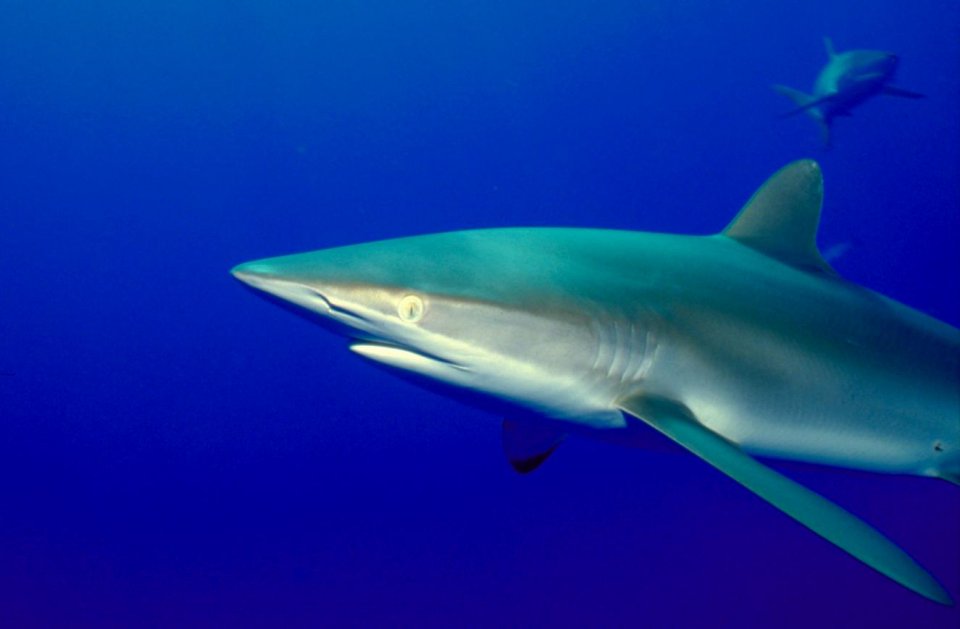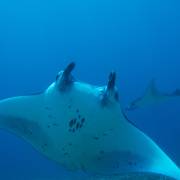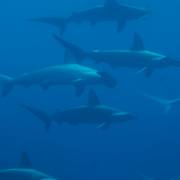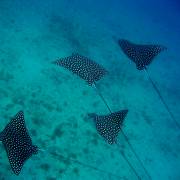Dive in Malpelo
Diving in Malpelo
Malpelo is a national park and as such, a 20 mile zone around the island is declared as a no fishing zone. In 2006, the UNESCO declared Malpelo as a world heritage site. Plus the island is home to a large variety and quantity of marine creatures, like Hammerheads, Whale Sharks and Mantas among others.
Divers are required to have at least an Advanced Open Water certification or have proof of extensive diving experience at the maximum recreational dive depths of 130 feet/ 40 meters, as sometimes the sea circumstances can be challenging even to most experienced divers.
Here you can come across amazing marine life! If you love sharks this will be heaven for you. Here you can find one of the biggest hammerhead shark population in the world, in addition to silkies, white tips, whale sharks, humpback whales, and the famous “monster “ shark, plus countless sorts of fish, several ray species, and the giant manta.
There are approximately 20 dive spots, where you can see the unique Galapagos Shark in the dive site La Gringa. In Castaway you can get in touch with hammerheads. The Monster Face dive site wall drop-off will allow you to dive with high concentration of silky sharks and hammerheads. The site Virginia Alther is known for barracudas. And The Freezer its the perfect place to meet with whale sharks, Mantas and Hammerheads.
During the whole year you can enjoy nice scuba diving on the island, with air temperatures ranging from 14°C in January and February, to 28°C the rest of the year. The water temperatures can fluctuate a lot during the dive: while the superficial water often has a temperature of 29°C, it can get as cold as 17°C at 40 meters. The diving conditions could be tough with strong currents, sudden drops in water temperatures, and even some choppy seas. Though January should be the calmest period.
In case you had any accident you can find a hyperbaric chamber in Buenaventura, Naval Base, Captain of Corvette.
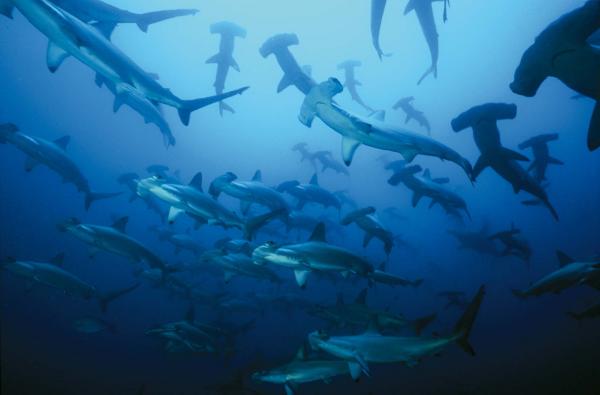
Travel to Malpelo
Malpelo is a volcanic island surrounded by 11 more islets, and it has an area of 3.5 square kilometers. Malpelo is located 90 kilometers west of Buenaventura and about 500 km off the coast of Panama. The shorelines are cliffs that emerge from a depth of 4000 meters. The isle is desolate, the only ones who live there are soldiers of the Army and Navy of Colombia.
The marine ecosystem is powerfully affected by the currents and species coming from the Indian Pacific and the Tropical Eastern Pacific. That’s the reason why Malpelo is an essential place for the reproduction and dispersion of marine species. Malpelo is the home to a large variety and quantity of marine creatures.
To visit the island you need to obtain permission from the National Natural Park offices in Bogotá. The main port to travel to Malpelo is Buenaventura, and the trip by boat from Buenaventura takes between 30 and 40 hours. Since the island is a Marine Park, the only way to visit it is via Liveaboard. You can take liveaboards from Colombia, Panama, and Ecuador. Unfortunately no boats operate from Costa Rica any more.
The Malpelo Foundation only admits one Liveaboard dive ship to be present at the island at any one time, with a maximum of 25 divers. Anchoring is not allowed anywhere within the marine protected area.
Considering that Malpelo is an oceanic island quite far from the continent, it is ideal for adventurous people, scientific researchers, diving lovers, birds and photography admirers, etc. As a consequence of the island separation from the continent it contains several endemic species: Malpelo land crabs and geckos, among them. Malpelo is home to the largest colony of masked boobies or Malpelo alcatrazes.
